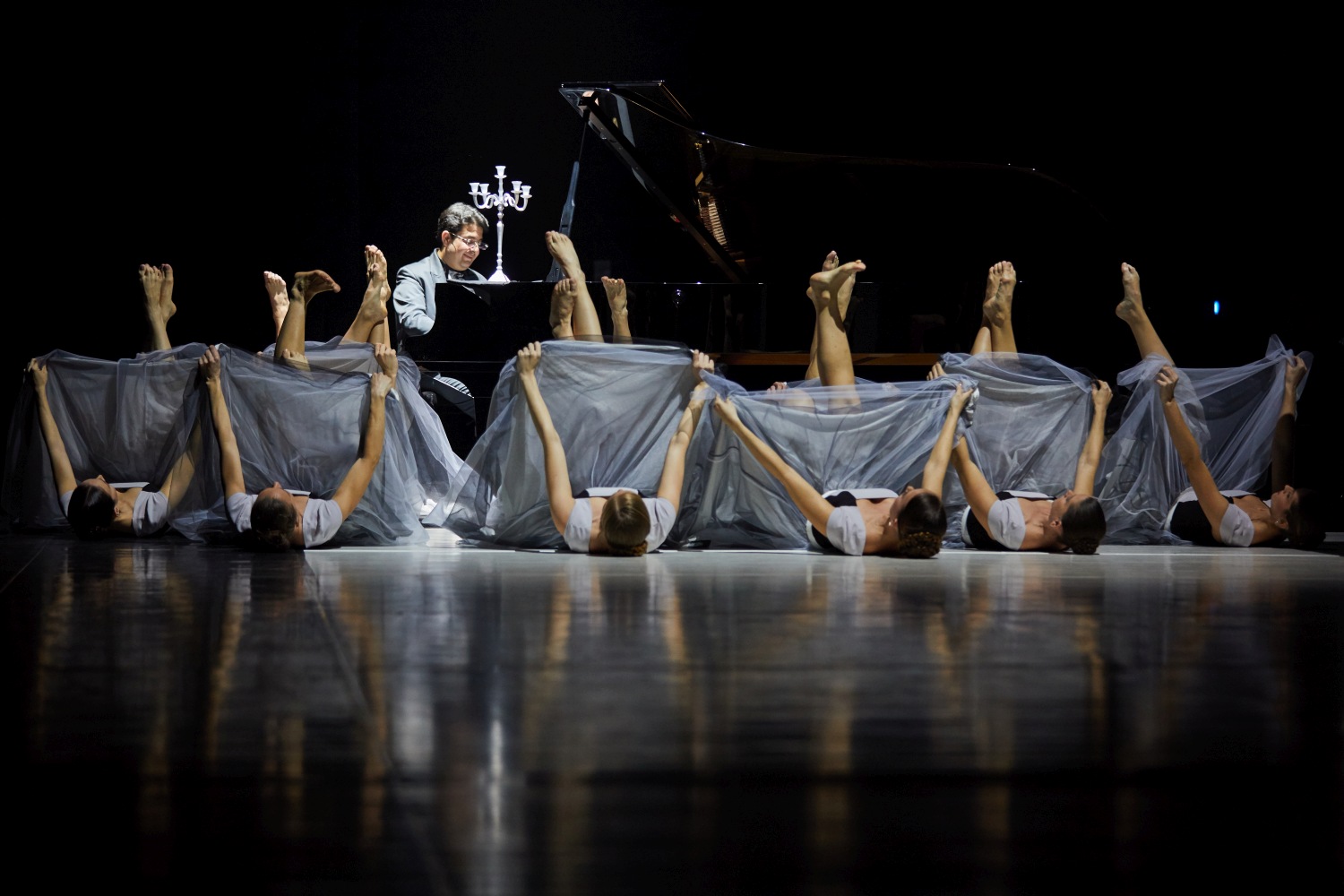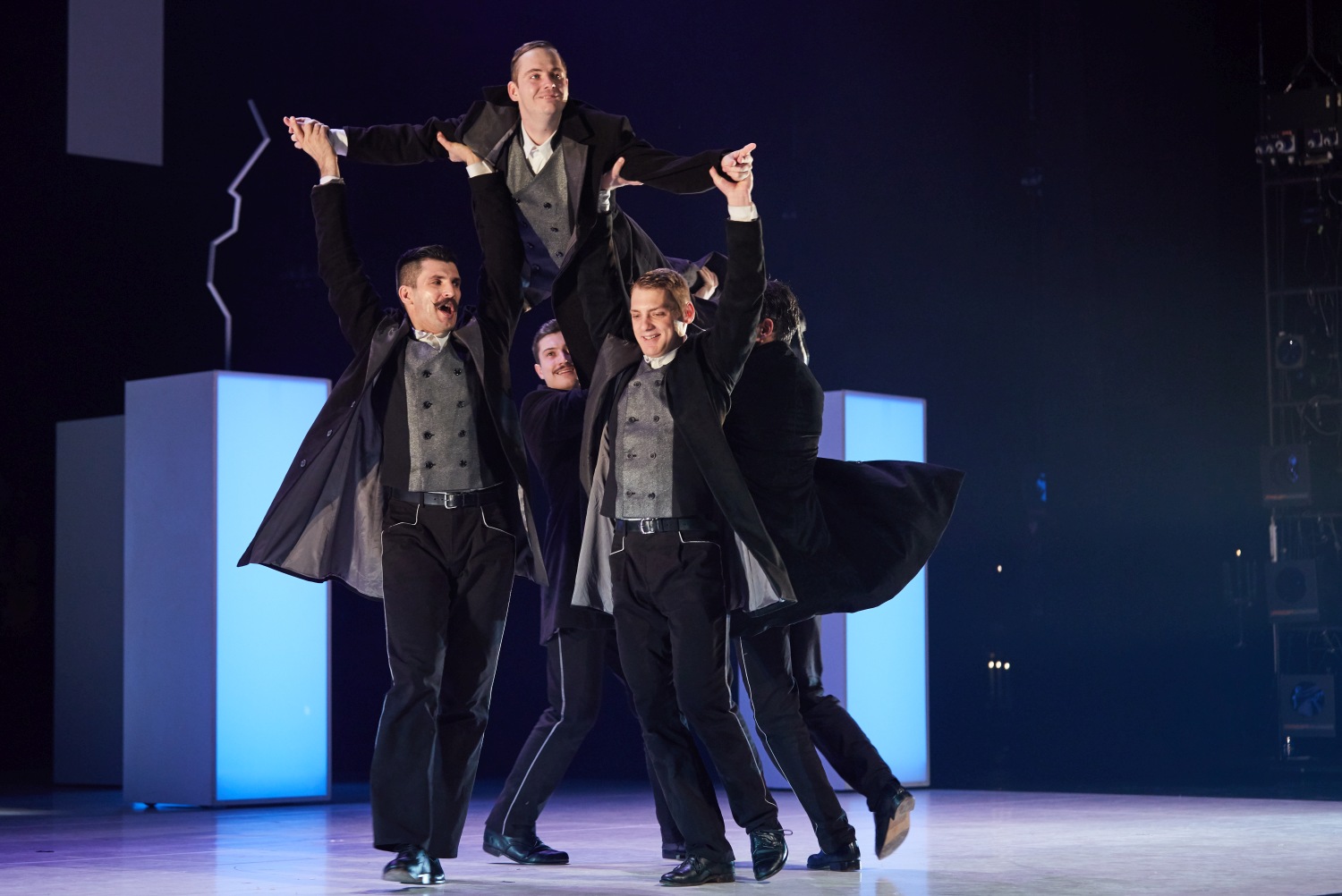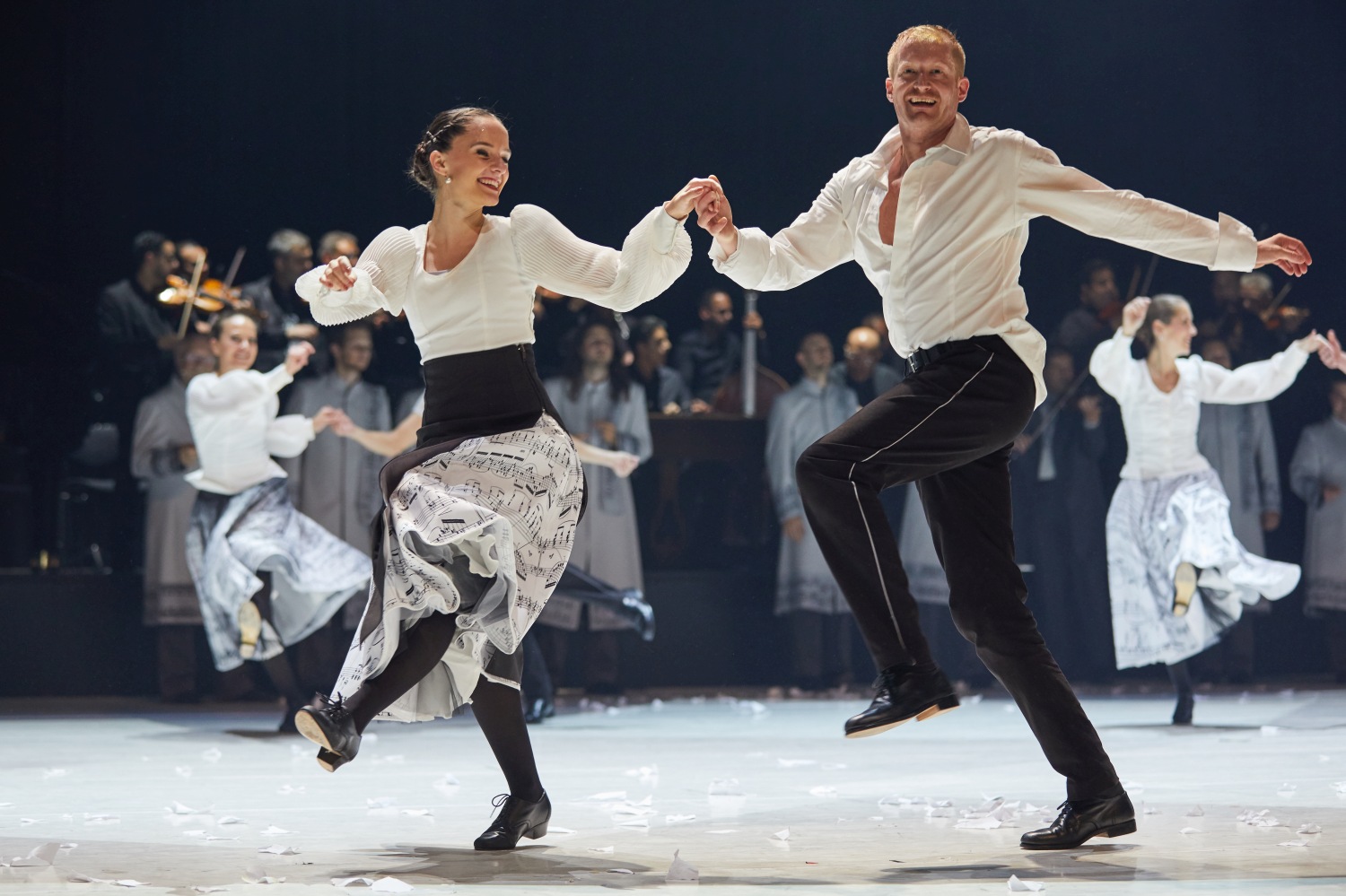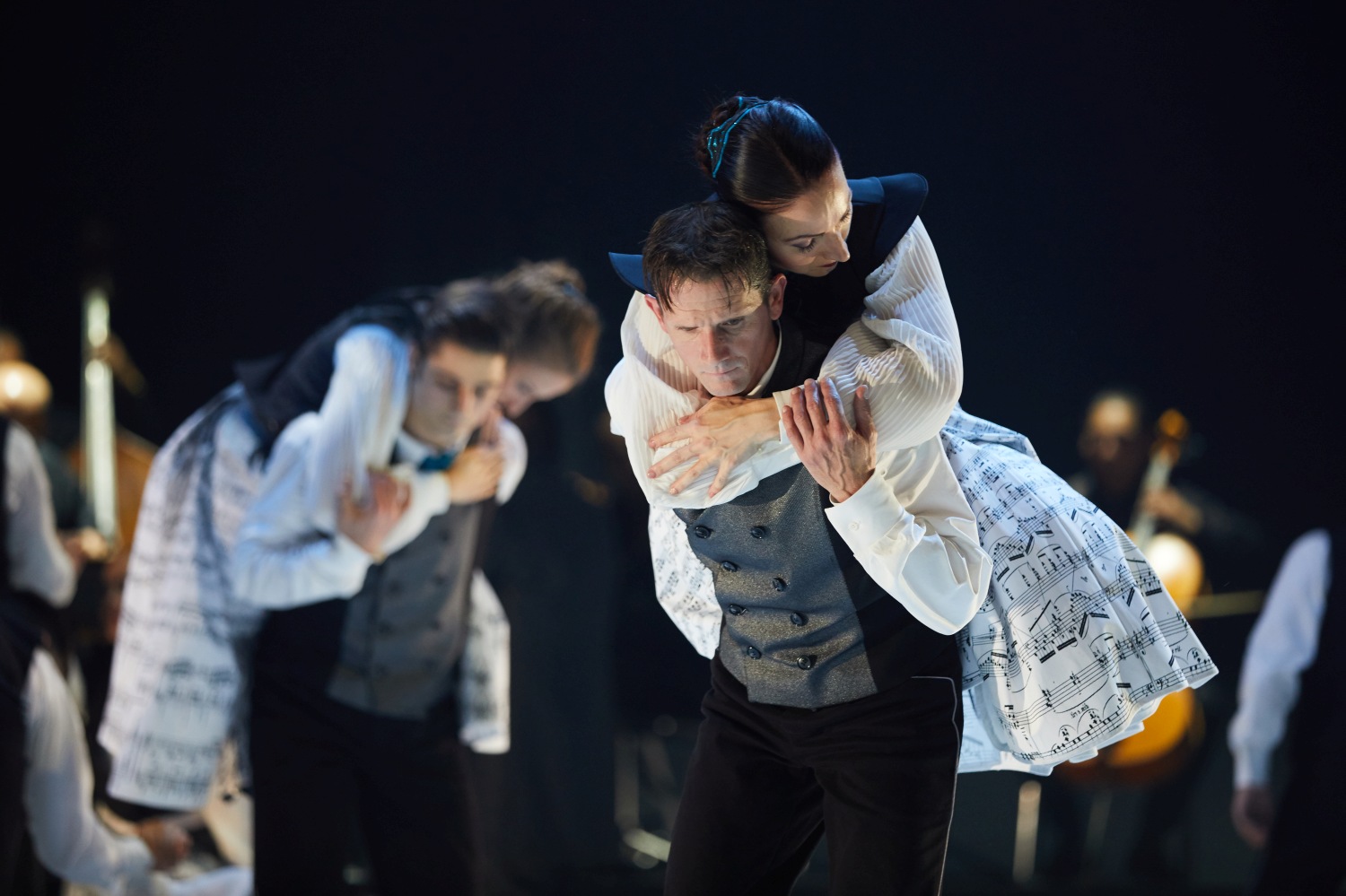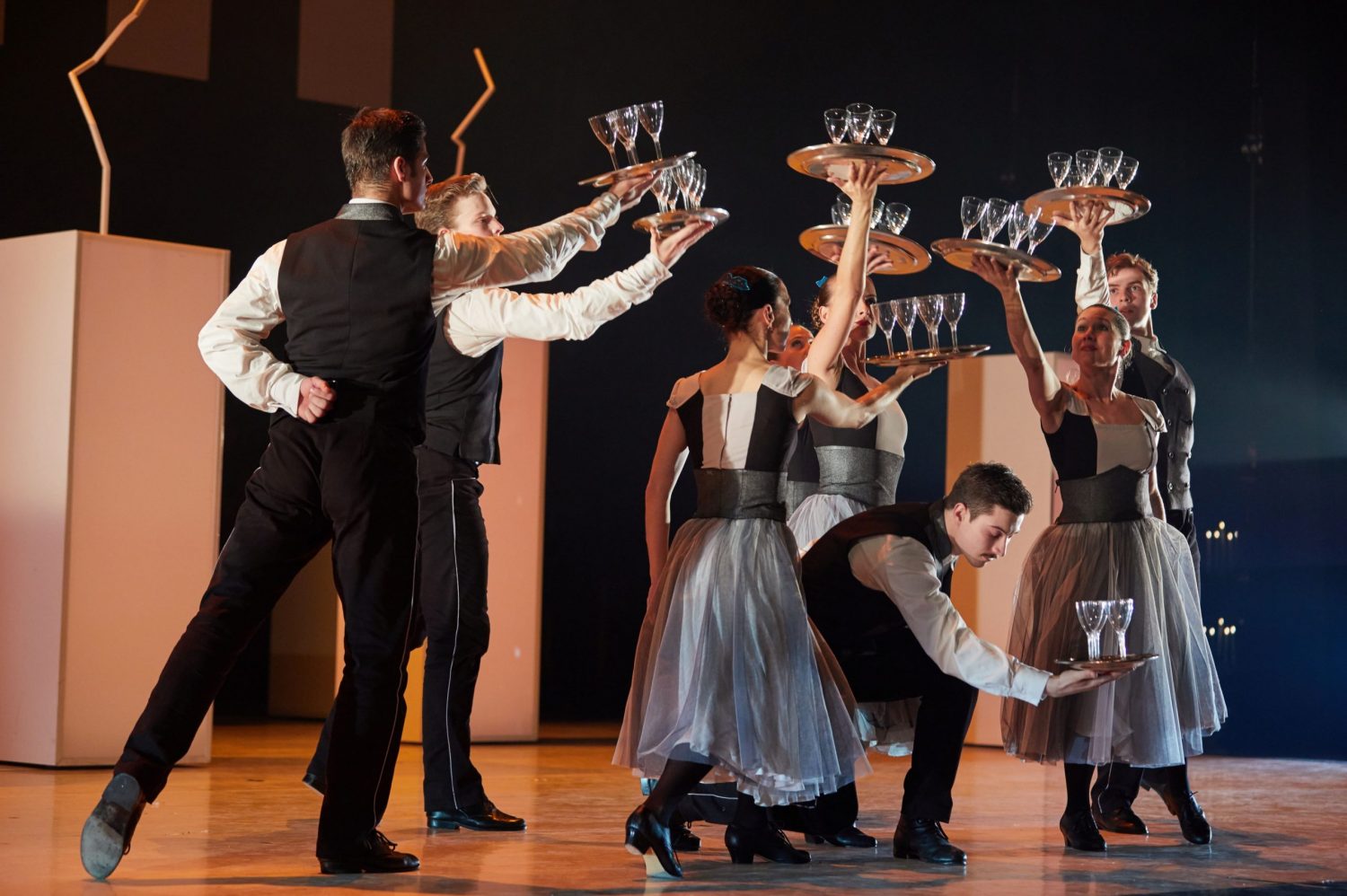“Dance and music have been intertwinned since the beginning of time; this natural assonance has created a celebration. A real and spiritual one. Our dance concert is also a dance celebration: a single grandiose idea across the horizon, celebrating musicians, singers and dancers.”
Gábor Mihályi, Director-Choreographer
About the show
Ferenc Liszt was not only one of the most outstanding and extraordinary pianists of his age,
but also a daring innovator, composer, conductor, well-renowned teacher and music writer. Preserving a respect for tradition, his art works were determined by modernity and a progressive approach.
The performance of the Hungarian State Folk Ensemble fuse the above spirit and artistic legacy into a single piece. Visual designers, decoration designers, costume designers and movie animators always face a special opportunity to think about a proposed stage piece in a metaphysical fashion: they are free to “come up with” the visual image, the stage arrangement and the costumes. Pieces determined by dance elements burden visual contributors with less restrictions; visual effects imagined by them serve dramaturgical effects only to an extent necessary for bringing the piece to the stage.
As artists responsible for and experiencing with visual effects, and also actively involved in contemporary arts, we have been invited to collaborate on a dialogue in a classical play based strongly on tradition; such proposition offers us freedom and inspiration. Such collaboration has produced a uniquely associative and organic piece. (Edit Szűcs, Costume Designer)
Decoration
The piece takes place in a fictional, symbolic concert hall: “somewhere, sometime” in Europe. However, the director’s intentions were more complex: the space should expand and stay versatile; it should be suitable for concert purposes, but also offer vertical and horizontal expansion. The audience shall experience an illusion as if they were in a castle or a ballroom, a Byzantine or Catholic sanctuary, in the woods at dawn, in a large metropolis, on or along the road, at a practice hall or a theatre.
The decoration produces this illusion in two dimensions: part of it is hanging above the stage, while the other part stays within the plane of the stage. Hanging elements function as lamellae: by moving them vertically, they induce keys of a piano, and at the same time, these elements are suitable for displaying projected images. Within the plane of the stage, dancers may move with columns along eight wheels, and therefore ensure that the space remains dynamic and changing constantly. Illuminated and color-changing pedestals display music sheets, and enhance the lyrical image of the performance. (György Árvai, Decoration Designer)
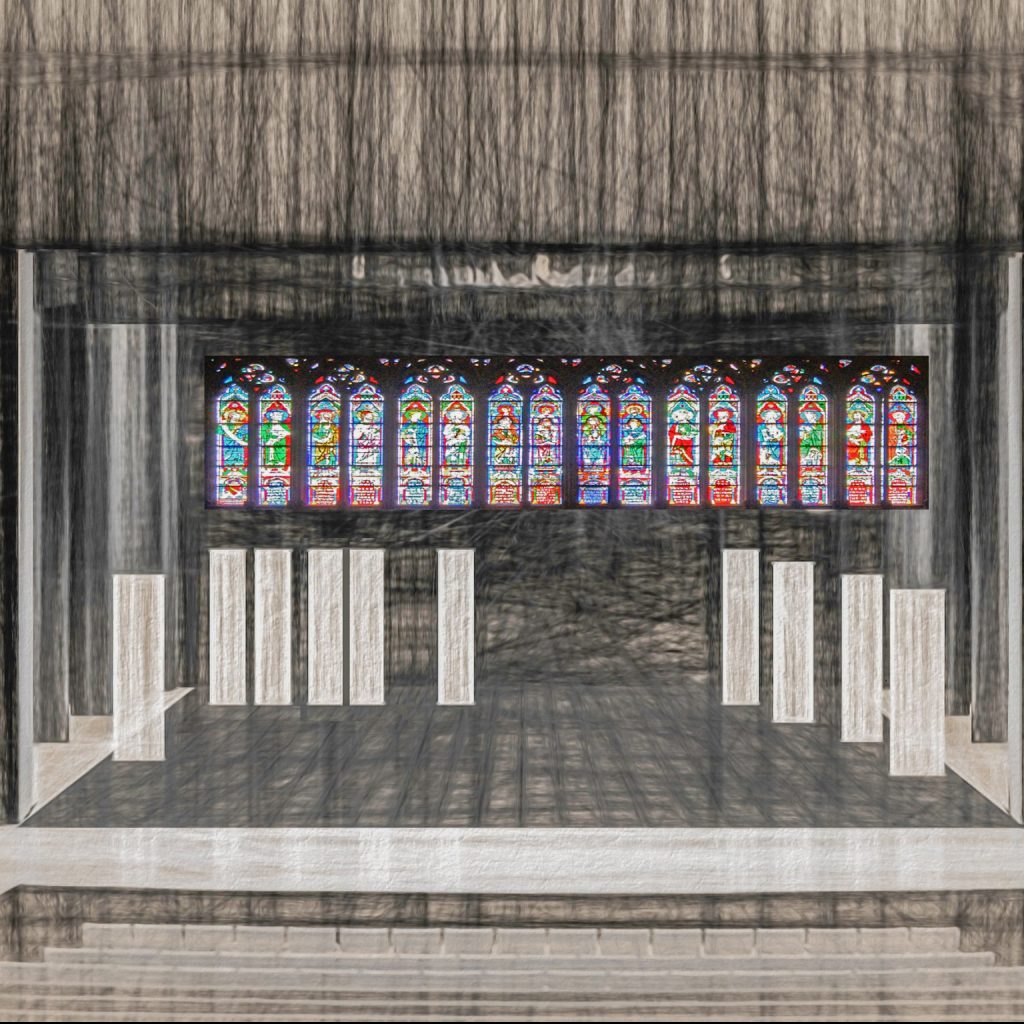
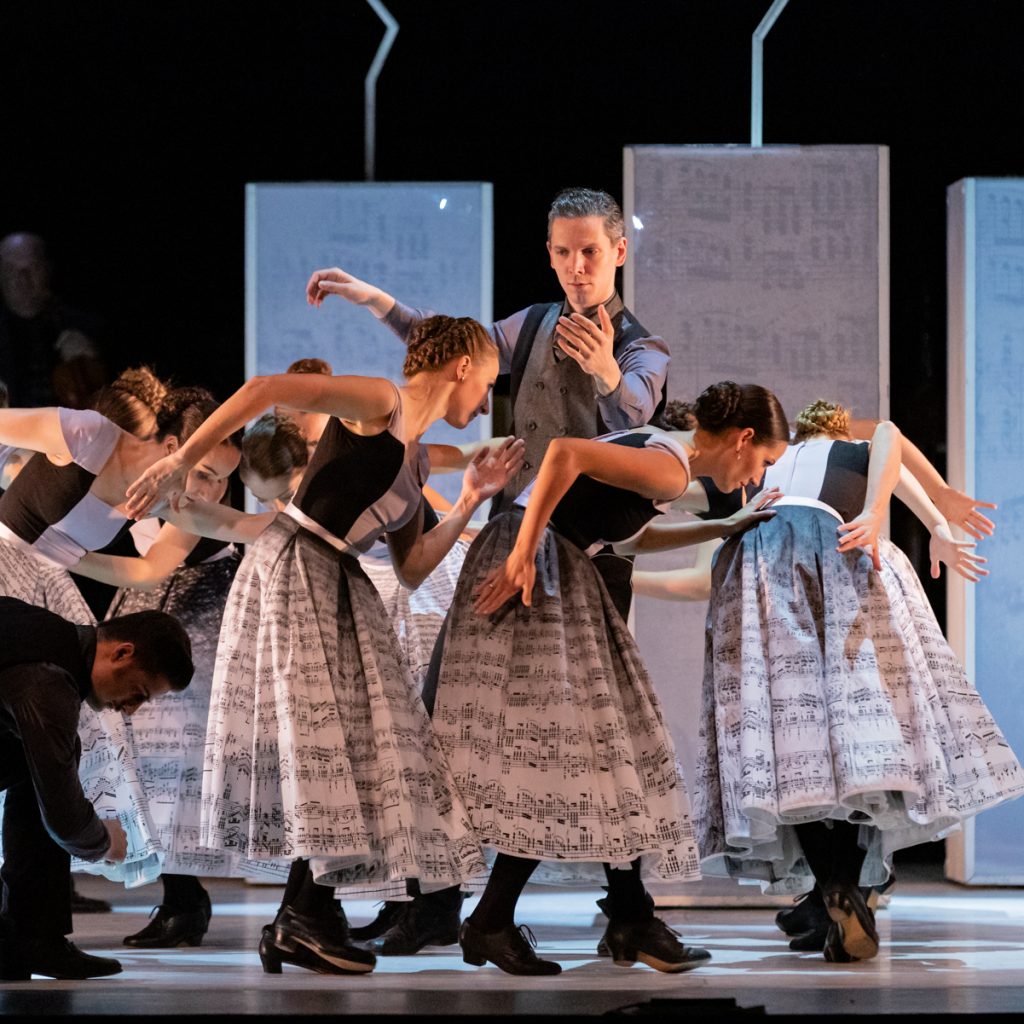
Costumes
Female and male costumes both resemble the fashion trends from the age of Ferenc Liszt. However, they do not aim for historical accuracy; the shaping and material used only hints to invoke the silhouttes of bodies, which also present a graphical effect on the white ballet floor. Using accessories, the ladies’ gowns may be changed constantly: once offering a sensual view and focusing on the beauty of the female body, and then switching to a more conservative look. Male costumes are also versatile, using multiple seams as accessories to accent a masculine look. Female and male costumes are both black and white, with the ladies’ gowns using silver as well. Fabrics of rich seaming are supplemented by playful tutus. As a significant visual elements, the symbolic music sheets consistently appears on the costumes of dancers and musicians as well. (Edit Szűcs, Costume Designer)
Projection
The projection, which is an integral part of the performance, represents a sovereign digital image poetry that completes the atmosphere of the scenes, and conveys them using the content to be displayed in a reinterpreted way (the world of Orthodox icons, the arm of Christ on the crucifix, castle window signs, portraits of Ferenc Liszt); on the other hand, the above are displayed as an abstract work of fine art. The color scheme is clear, predominantly monochrome (black and white); further colors subtly appear in the animation, displayed on the upper hanging lamella system, that creates the 3D illusion. (György Árvai – Zsolt Korai, Visual Effects and Animation)

The ensemble of visual elements – with its consistent, reflective sign systems – evokes the era of Romanticism in a wide-ranging way according to the author’s intentions, while also reflecting a contemporary illustration that reflects our present world.
Featuring:
piano: Szabó Marcell
Saint Ephraim Men’s Choir (artistic director: Tamás Bubnó)
Creators:
music: Liszt, Chopin, Paganini
arranged by: Tamás Bubnó, István Szalonna Pál, Ferenc Radics, Márk Bubnó
musical editor, artistic director: István Szalonna Pál
choreographers: György Ágfalvi, Gábor Mihály, Orza Calin, Zoltán Zsuráfszky Jr.
costume designer: Edit Szűcs
set, visual design: György Árvai
video animation: Zsolt Korai
lighting designer : Zoltán Vida
band director: Ferenc Radics
dance ensemble director: György Ágfalvi
dance ensemble assistants: Beatrix Borbély, Katalin Jávor, Zoltán Zsuráfszky, Máté Farkas
director, ensemble leader: Gábor Mihályi
The première is a co-production of Müpa Budapest, Hungarian State Folk Ensemble – Hungarian Heritage House and the National Dance Theatre.
